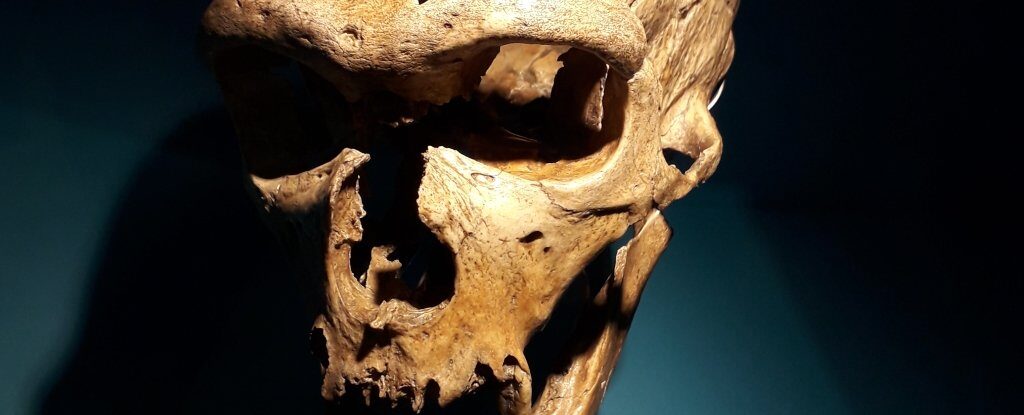In spite of the myriad of findings detailing their genetic and cultural similarities, our long-extinct 'cousins' are still all too often exiled into their own species, Homo neanderthalensis.
That categorization is due for a change, according to a team of researchers who have spent the past twenty years digging through layers of dust and grit in the central Portuguese cave site of Gruta da Oliveira.
"More than different species, I would speak of different human forms," says University of Trento archaeologist Diego Angelucci, the lead author of a recent study summarizing decades of research on what was home to families of Neanderthal more than 71,000 years ago.
Angelucci and his team detailed the occupation of Gruta da Oliveira, which saw Neanderthals intermittently share time in the cave with wolves, lions, brown bears and lynxes between 93,000 and 71,000 years ago.
Among the scattering of stone tools and animal remains were bones that had been burned in a way that provided strong evidence of controlled use of fire.
Cooking a range of meats, including goat, deer, and horses on a hearth that rarely moved out of position, it was clear fire was a central part of everyday Neanderthal life at Gruta da Oliveira.
It's no secret that branches of the hominin family tree have appreciated a good blaze for at least 250,000 years or so. For a significant proportion of that time, those flames were deliberately lit, well managed, and contained with the purpose of cooking, if not also staying warm and keeping predators at bay.
Yet Neanderthals had already long diverged from our shared ancestral lineage by the time anatomically modern humans became recognizably distinct, with some speculating they went their own way more than 800,000 years ago.
The initial discovery of their remains in a quarry back in 1864 represented the dawn of a new era in science - the first inkling that there were once other kinds of human.
Based on distinct differences in anatomy, the Anglo-Irish geologist William King proposed they belonged to their own species, one that stood upright like us only with a hunched, more robust appearance. This long-dead, cave-dwelling relative was assumed to be an intellectual dunce compared with modern humans when viewed through the lens of Victorian-era anthropology.
As discoveries mounted and analytical tools improved, our impressions of the Neanderthal gradually shifted. Gone is the archaic stoop and animalistic grunting. Today our 'primitive' relatives appear to have intentionally buried their dead, made jewelry, and may even have created art.
Evidence that they carefully used fire in their technology only further builds a case that Neanderthal culture was far from simple, and far more akin to our own.
"There is a general agreement among archaeologists that they knew how to use fire," says Angelucci.
"However, one thing is to use fire started by natural processes, such as lightning, another is to make it, feed it with wood and use it for cooking, heating and defense."
Just how they might have started fires isn't yet clear, though Angelucci speculates it might not have been all that different to other Neolithic practices, such as the flint and tinder method used by Ötzi, the Iceman.
With genetic analysis confirming Neanderthals frequently interbred with our own ancestors multiple times through history, the case for them being a separate species weakens only further.
Comment: It seems the interbreeding wasn't that common, and the mixing is considered by at least one recent study to be detrimental to modern humans; this same study asserts that, Neanderthals are, indeed, different enough to humans to necessitate a separate classification: Neanderthals carried genes acquired from ancient interactions with 'cousins' of modern humans
It's unlikely we'll finally see the classification of Homo neanderthalensis fade into obscurity any time soon. Messy, confusing, and as conservative as it is, taxonomy continues to be useful and fundamental to our historical understanding of biology.
Still, as more sibling than cousin, it seems the poor old Neanderthal deserves to sit right by our side in the Homo sapien family portrait.
This research was published in PLOS ONE.




Larger brain cases.
Look at the people of NuiGini.